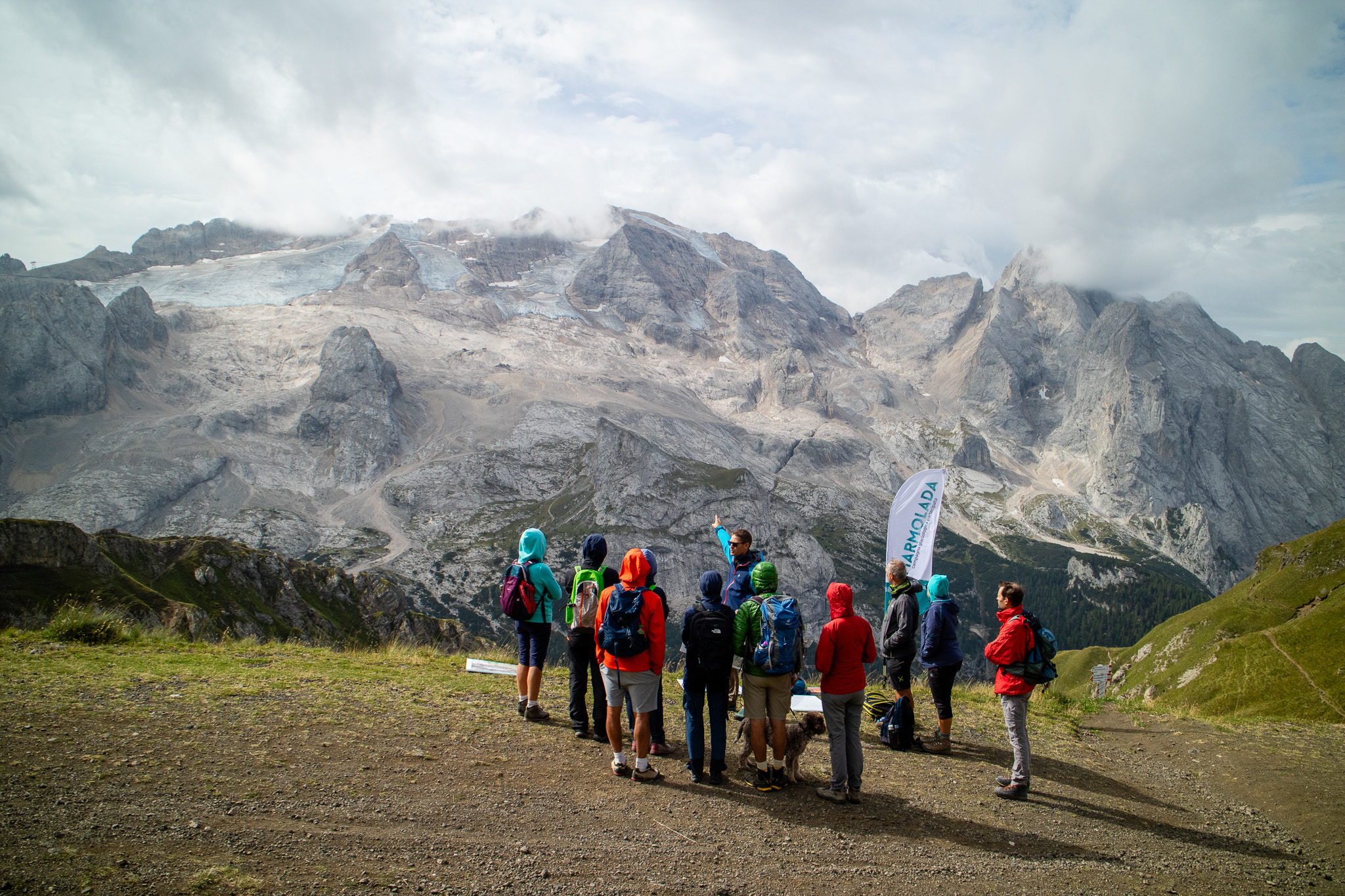Unipd-Arpav glaciological campaign to monitor the state of the Marmolada glacier

The observations and measurements conducted in the last participatory glaciological campaign, organised by the Museum of Geography of the University of Padua, in partnership with the Italian Glaciological Committee and ARPAV, confirmed the dramatic information already known to experts, precisely that the Marmolada glacier is still shrinking at an impressive rate both in terms of surface and volume.
Late in August, a group of around 20 experienced hikers from Veneto, Emilia-Romagna and Lombardy monitored the state of the glacier, assessing the increasing shrinking process with their own eyes. Lecturer Mauro Varotto from the University of Padua was among them, and placed in charge of measuring operations. With data in hand, he confirms the severity of the phenomenon, which in some places verges on 90 m per year, with an average of around 20 m a year in the eight monitoring posts located along the front.
The dramatic melting trend, which has been on the minds of experts for years, will soon cause the surface area of the glacier to drop to less than one square kilometre, which is equivalent to half the area in 2000, and to less than a quarter of that in 1900.
The causes of this summer’s melting phenomenon, says Mauro Valt, ARPAV research technician, can be identified in the combination of weak snowfalls and particularly high summer temperatures, which this year reached an absolute record since 1900. The importance of the issue is such that it also has direct repercussions on the economy of these areas, which is primarily centred on the ski industry. The sector increasingly fears a crisis due to the sudden regression of the skiable surface, as stated by Alberto Lanzavecchia, lecturer of Corporate Finance at the University of Padua.
Raising the population’s awareness of the phenomenon of Alpine glacier melting is becomingincreasingly important today.Indeed, initiatives such as participatory glaciological campaigns, of which this is the fifth to date, are valuable experiential, educational and knowledge-promoting moments in this regard. Accompanying citizens to the site along with leacturers, researchers and experts, as occurs on such occasions, adds Giovanni Donadelli,Curator of the Geography Museum, allows people to come into close contact with the territory with a multidisciplinary approach, and to increase awareness of the actions of climate change in delicate neighbouring areas, such as the Alps.
